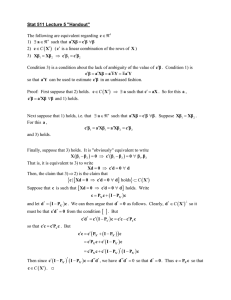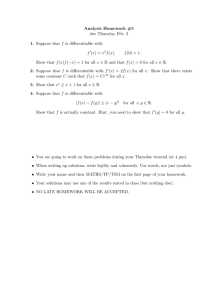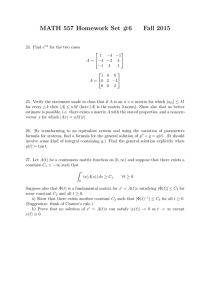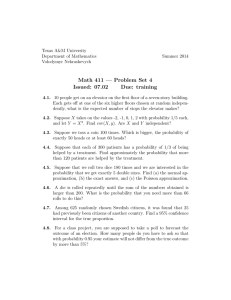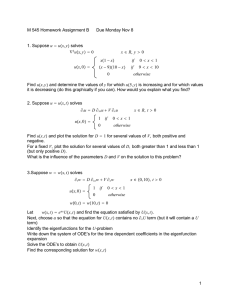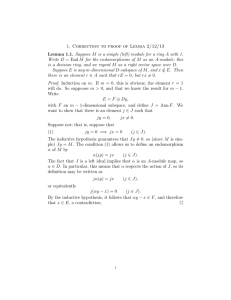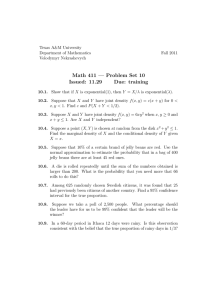Lesson_7_1
advertisement
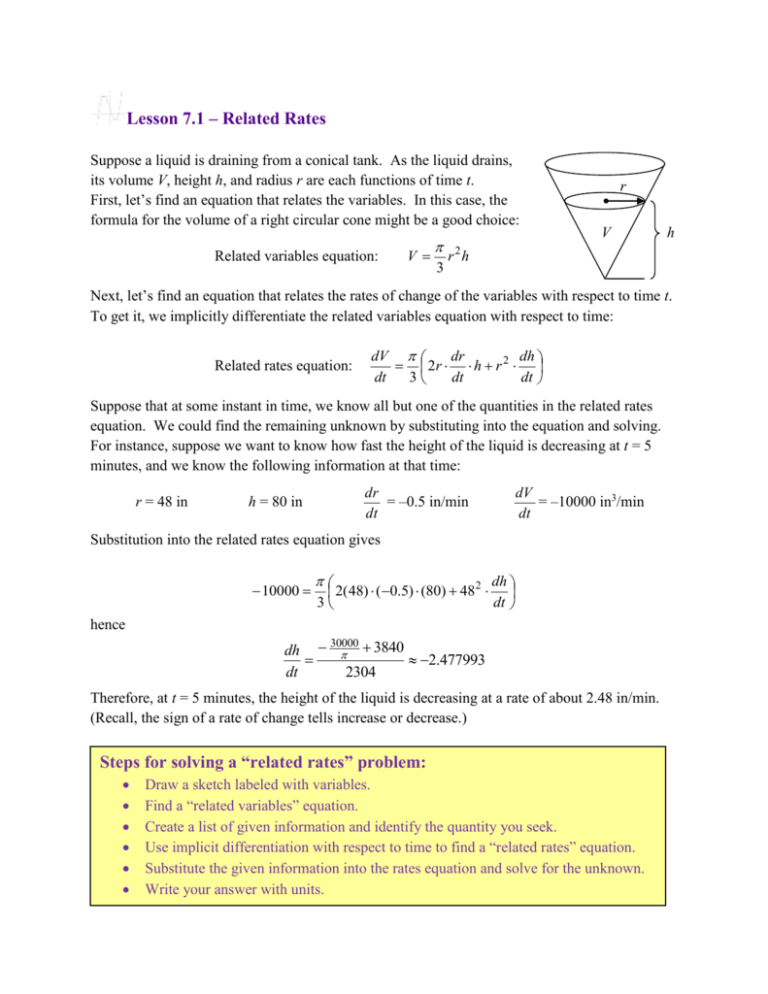
Lesson 7.1 – Related Rates Suppose a liquid is draining from a conical tank. As the liquid drains, its volume V, height h, and radius r are each functions of time t. First, let’s find an equation that relates the variables. In this case, the formula for the volume of a right circular cone might be a good choice: Related variables equation: V 3 r V h 2 r h Next, let’s find an equation that relates the rates of change of the variables with respect to time t. To get it, we implicitly differentiate the related variables equation with respect to time: Related rates equation: dV dr dh 2r h r 2 dt 3 dt dt Suppose that at some instant in time, we know all but one of the quantities in the related rates equation. We could find the remaining unknown by substituting into the equation and solving. For instance, suppose we want to know how fast the height of the liquid is decreasing at t = 5 minutes, and we know the following information at that time: r = 48 in dr = –0.5 in/min dt h = 80 in dV = –10000 in3/min dt Substitution into the related rates equation gives 10000 2 dh 2( 48) ( 0.5) (80) 48 3 dt hence 30000 dh 3840 2.477993 dt 2304 Therefore, at t = 5 minutes, the height of the liquid is decreasing at a rate of about 2.48 in/min. (Recall, the sign of a rate of change tells increase or decrease.) Steps for solving a “related rates” problem: Draw a sketch labeled with variables. Find a “related variables” equation. Create a list of given information and identify the quantity you seek. Use implicit differentiation with respect to time to find a “related rates” equation. Substitute the given information into the rates equation and solve for the unknown. Write your answer with units.
